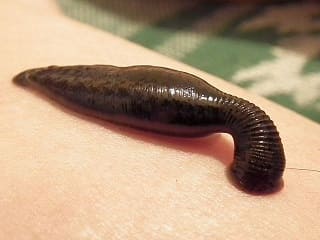Phylum Annelida
The annelids are a group animals invertebrates soft body, cylindrical and elongated, characterized by being divided into rings called metamers.
The body of the annelids is made up of numerous metamers or rings similar to each other. The internal anatomy of the annelids is a reflection of the external, with repetition of various organs in each metamere.
Although the annelids are sometimes referred to as worms, this is not correct since other very different animal phyla could be included within the worms, such as the flatworms or the nematodes. These phyla share characteristics, such as their bilateral symmetry, not having jointed appendages, and living in humid environments.

Most of the annelids are aquatic (such as the leech), although they can also be terrestrial (such as the earthworm), and free-living. There are also some that are parasites.
Their respiration is gill or cutaneous, through the skin, so they have to live attached to water or in moist soil.
Annelids are more complex than porifera and cnidarians, as they have tissues and apparatus such as the digestive (with a mouth and anus), the circulatory (closed), and the excretory.
Bilateral symmetry appears in these organisms , being able to divide the body longitudinally into two symmetrical parts.
The process of cephalization begins, in which the mouth, sense organs, and nerve ganglia are grouped together at the front of the body.
They have sexual reproduction (with eggs and sperm), and although there are hermaphrodite species, they do not usually self-fertilize. With cross fertilization, gametes are exchanged and the variability of the species is favored. They are oviparous beings.
Three groups of annelids are distinguished:
With the exception of hirudíneos (leeches), which are parasites and feed on the blood of other organisms, the rest of the annelids are characterized by having setae. The setae are hairy structures of chitin with tactile and locomotive function. The setae are very abundant in the polychaete (eg Nereis) and less abundant in oligochaetes (for example, earthworms).
